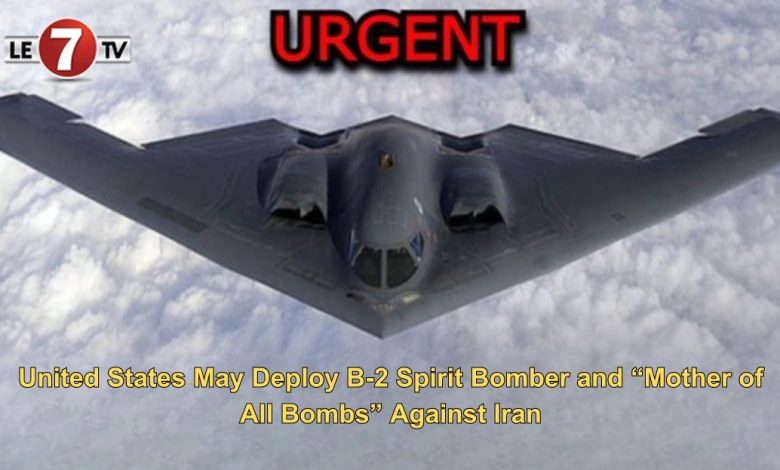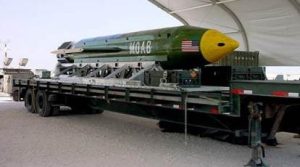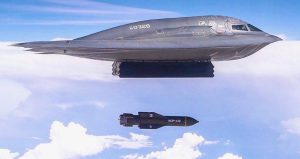United States May Deploy B-2 Spirit Bomber and “Mother of All Bombs” Against Iran
The world is holding its breath: a U.S. military strike using some of its most powerful weapons since World War II is no longer a matter of speculation—it is reportedly under serious consideration.



Amid renewed chaos in the Middle East following Israel’s dramatic strike on Iran’s nuclear infrastructure, attention is now turning toward Washington. According to multiple military sources, the U.S. is contemplating the use of its most formidable military assets, including the stealth B-2 Spirit bomber and potentially the MOAB (“Mother of All Bombs”), to target strategic Iranian facilities if the situation continues to escalate.
Rising Tensions After Operation “Rising Lion”
This surge in military tension follows Operation “Rising Lion”, launched by Israel on Friday, June 13, which targeted three key Iranian nuclear sites: Natanz, Fordo, and Isfahan. Initial satellite imagery and reports from the International Atomic Energy Agency (IAEA) confirm that the attacks caused significant damage.
1. Natanz – The Heart of Iran’s Nuclear Program Hit Hard
Located 220 km south of Tehran, Natanz is home to nearly 10,000 centrifuges and is considered the core of Iran’s uranium enrichment capability. Israeli airstrikes reportedly destroyed surface-level infrastructure and power systems. While the deeply buried underground section—nearly 100 meters below ground—appears to be intact, critical operations may have been compromised due to indirect damage and power disruptions.
2. Fordo – The Mountain-Shielded Enrichment Site
Built under a mountain for added protection, Fordo is one of Iran’s most secretive facilities. Though the IAEA assessed the damage as “minor,” the precision of the Israeli strike in such a fortified area suggests significant technological advancement in precision warfare.
3. Isfahan – Hub of “Yellowcake” Processing
Four facilities in Isfahan were reportedly targeted, including a uranium conversion plant, a fuel fabrication unit, and a nuclear chemistry lab. Israel claims the plant was “dismantled,” although the IAEA downplays the extent of the destruction. Nevertheless, Isfahan remains a critical link in the chain of converting yellowcake into enriched uranium.
Why Might the U.S. Strike?
Pentagon analysts suggest that Israel’s strikes could represent only the opening salvo—especially if Iran retaliates forcefully or resumes uranium enrichment at hidden sites. This is where the B-2 Spirit stealth bomber, capable of penetrating sophisticated air defenses and delivering massive payloads, becomes a key asset under consideration.
The most feared option remains the deployment of the GBU-43/B Massive Ordnance Air Blast (MOAB), nicknamed the “Mother of All Bombs.” Its devastating power—comparable to a localized earthquake—can obliterate underground facilities buried as deep as 100 meters.
While no final decision has been announced, the mere possibility of such a strike underscores the high stakes and potential for escalation in the region. If carried out, it would mark one of the most significant military operations by the U.S. in decades.
Editorial team/le7tv








